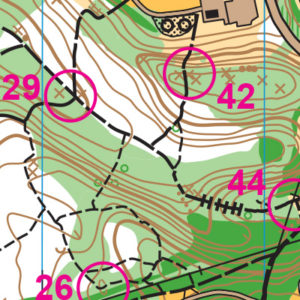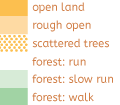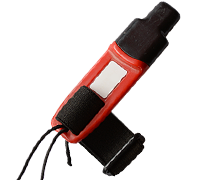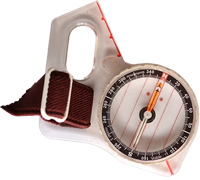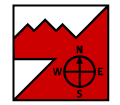2023 Ultimate Orienteer #1 – Lynndale Park (Night-O)
Sign up for a start time Here. The signup is now closed.
The start list is Here.
There is no day-of-event registration.
 Event #1/8 in the Ultimate Orienteer Series!
Event #1/8 in the Ultimate Orienteer Series!
Let’s kick off the Ultimate Orienteer Series in the dark! Get out your headlamps and join us for this fun event at Lynndale Park in Lynnwood. Even if you’ve been to a park many times, things look different in the dark.
COURSES
Course designer(s): Kate Byers-Jensen, Rebecca Jensen
Preliminary course information.
| Course | Controls | Length | Climb |
|---|---|---|---|
| Beginner | 10 | 0.9 km | 30m |
| Intermediate | 10 | 1.7 km | 40m |
| Short Adv | 19 | 2.2 km | 60m |
| Long Adv | 21 | 2.8 km | 80m |
What is my age class?
Night-O Course/Class Assignments for Ultimate points
If you want to earn Ultimate points, check the table below to see which category you should sign up for. Find your age class in the left column, then follow the row across to the right until you find the dark orange cell. That is your “assigned” category.
For example, if you’re a female 16 or under, your Ultimate age class is F-16 and, for this event, is assigned to the Intermediate course. If you are up for a more challenging course, you can also earn points in F-18 on the Short Advanced course, or F-20 or F-21+ on the Long Advanced course. Just keep in mind that other courses are more difficult, both navigationally and physically. Also keep in mind that you’ll be earning points only in the class you sign up for.
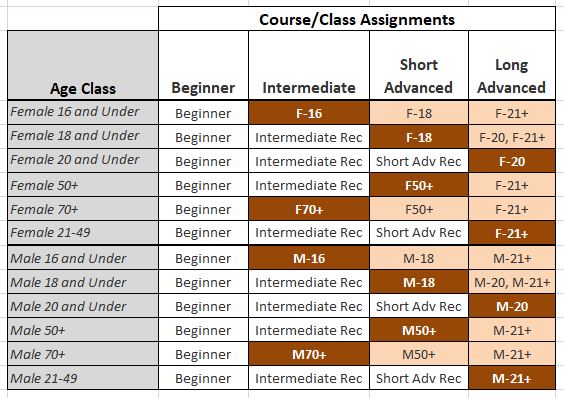
How are courses measured?
Courses are measured as the crow flies, in a direct line from control to control. Unless you have wings, you will travel farther than this distance! Courses are measured in kilometers, so a good rule of thumb is to simply round up to miles to estimate how far you will go. So in a 5 kilometer race, you’ll likely travel up to 5 miles.
Course Designer Notes
NIGHT-O things
Orienteering in the dark is harder than orienteering in the daylight. You can’t see as far, as much, or as clearly. These course lengths may seem short, but courses take longer in the dark. If this is your first Night-O, consider either running an easier level than you typically do, or adjust your expectations and be ready for an adventurous learning experience.
All control flags have a reflective strip on them! This is incredibly helpful if you have a flashlight. 😉
Speaking of lighting- you’ll need some. You can use a headlamp, flashlight (maybe nick your bike light), or both! TIP: keep your headlamp set to low, so that when you look at your map, the reflection doesn’t blind you. Then use a handheld flashlight on a brighter setting to see the ground and sweep the trees for the that tell-tale flash of reflective strip on the control flag or the trail you need to take.
Is your compass acting funny? The magnetic needle may be attracted to the metal in your flashlight! Keep your light in your non-compass hand to prevent confusion.
Be courteous. Point your light down when passing so that you don’t blind fellow orienteers.
COURSE things
- Beginner: all controls are on major trails.
- Intermediate: all controls are on or near major trails, and there’s more route choice. You will sometimes need to decide when to temporarily get off a major trail.
- Short & Long Advanced: controls are everywhere, have fun!
Lynndale is a small park and some controls are close together. Be sure to check your control number, code and description. Intermediate & Advanced courses cross over themselves, so look carefully for your next control on the map. Some lines between control circles have been bent to improve legibility.
This map scale is 1:4000 and uses 1.5m contours (yes, you read that right: one point five meter contours). Most orienteering maps are 5m contours. Hills that look “steep” on the map are maybe not as steep as you would think.
On a 1:4000 map, features may already feel like they’re “coming up quickly”, and on top of that, your sense of distance may be screwy in the dark. Take care to not overrun what you’re looking for. Fortunately, Lynndale is also rich in linear catching features (major trails, streets, fences) to help you re-locate yourself. Note that major trails are tan, while smaller trails are black dashed lines. Some mapped small trails have disappeared, while other new social trails have not yet been mapped, both can mislead you. Remember that contours rule, and fortunately there are some distinct contour features here to help you.
Some mapped stumps and rootstocks have decided to become knolls or fully decompose. Wind has removed trees and thrown their branches all over the ground, obscuring mapped minor trails and creating new unmapped rootstocks and stumps.
As a general rule, things are slippery when wet, and it’s easy to trip over, run into, or fall into things in the dark. Be careful! And have fun.
SCHEDULE
Pre-registration only!
6:30-8:15 pm – Check in
6:30-7:30 pm – Newcomer instruction
7:00-8:30 pm – Starts (start times are pre-assigned; sign up for a start time (here) by Thursday of event week at 9pm; if you don’t, you’ll have to wait for an available spot)
9:15 pm – Courses close*
*Wear a watch to ensure that you return to the finish by course closure time, even if you have to abandon your course to do so. Those returning after course closure will be disqualified and will make the volunteer staff very grumpy.
Why is there a start window?
This event uses an interval start, which means that participants are started in waves instead of all at once. When you arrive at the start tent, find the chute for your course and follow the start volunteer’s instructions.
PRICES
PRICES
Online pre-registration only!
$22 base price
– subtract $5 for CascadeOC members
– subtract $5 for using your own e-punch
Participating as a group? Just $5 for each additional adult (16+) group
member, no cost for additional minors.
What’s an e-punch?
An e-punch records your race. At each control, you’ll dip the e-punch into an electronic box, which will beep and flash as confirmation. After you finish, you’ll download the e-punch at the download tent and get a receipt that show which controls you visited and how long you took between each; these are your “splits.”
Part of the fun of orienteering is comparing your splits with people who completed the same course, and discussing the routes you took!
SIGN UP
Online pre-registration closes: March 9 @ 9pm Pacific time
There is no day-of-event registration.
Sign up for a start time Here.
LOCATION
PARKING
Parking is available in the park.
CARPOOL
Looking for a carpool? Join the club email group and share your request to find a ride.
THE MAP
Lynndale Park is a 1:4,000-scale map with a lot happening in it. You’ll find rolling hills, runnable forest, and a complex trail network bounded by open areas with buildings. This is where the school league training is held each fall.
Read more on the map pageSAFETY & ETIQUETTE
Return to the Finish
All participants MUST return to the finish and download their e-punch or turn in their punch card.
Even if you have not finished your course, you must still return to the the finish and confirm with event staff that you have returned safely.
Out of Bounds
Some areas may be marked out of bounds. It is imperative to respect these boundaries to maintain our relationships with land managers. Participants MUST NOT go out of bounds. Any participant caught going out of bounds will be disqualified.
Course Closure
All participants MUST return to the finish by course closure time. If a participant does not return by course closure, event volunteers will begin coordinating a search party.
If you need a long time on the course, start as early in the start window as possible, wear a watch, and be prepared to cut your course short to make it back by the course closure time.
Whistle
All participants MUST carry a whistle on the course. Complimentary whistles are available at the start tent (please only take one).
If you are injured on the course and need assistance, blow three long blasts to call for help.
If you hear a call for help, abandon your course to find the person in distress.
Voices
Part of the fun and fairness of orienteering is navigating your own course, so please be polite when you find a checkpoint and don’t holler that you’ve found it.

